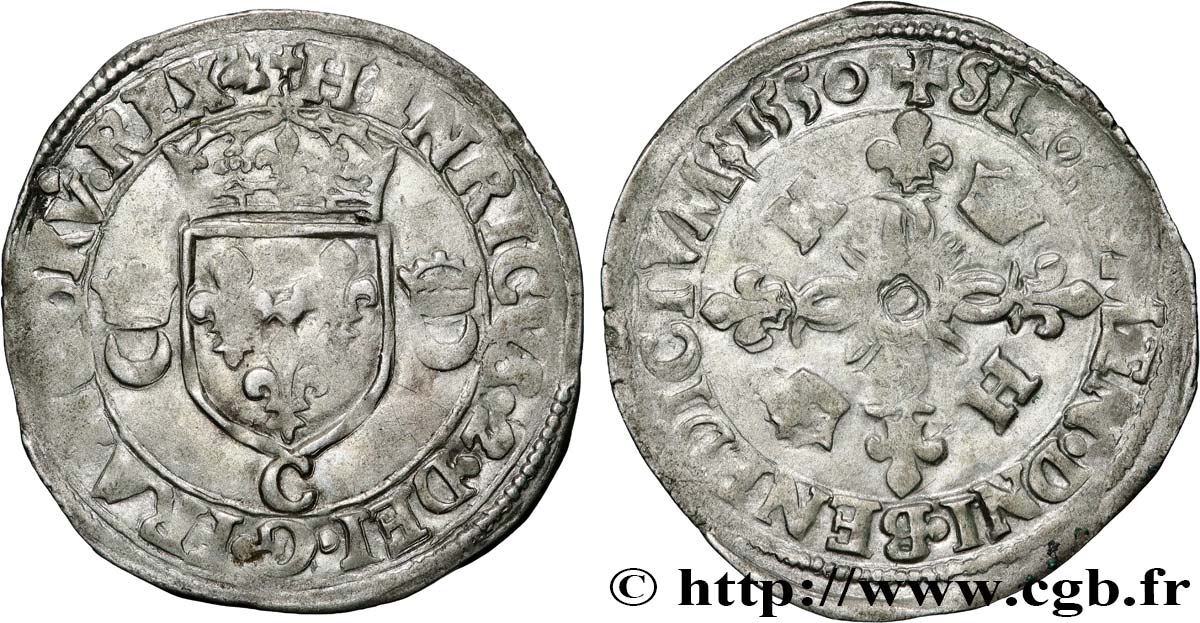E-auction 597-562555 - bry_838831 - HENRY II Douzain aux croissants 1550 Saint-Lô
You must signin and be an approved bidder to bid, LOGIN TO BID. Accounts are subject to approval and the approval process takes place within 48 hours. Do not wait until the day a sale closes to register. Clicking on « bid » constitutes acceptance of the terms of use of cgb.fr private e-auctions.
Bids must be placed in whole Euro amounts only. The sale will start closing at the time stated on the item description; any bids received at the site after the closing time will not be executed. Transmission times may vary and bids could be rejected if you wait until the last second. For further information ckeck the E-auctions F.A.Q.
NO BUYER'S FEE.
NO BUYER'S FEE.
| Estimate : | 60 € |
| Price : | 45 € |
| Maximum bid : | 57 € |
| End of the sale : | 23 September 2024 15:22:00 |
| bidders : | 8 bidders |
Type : Douzain aux croissants
Date: 1550
Mint name / Town : Saint-Lô
Quantity minted : 1790840
Metal : billon
Millesimal fineness : 292 ‰
Diameter : 26 mm
Orientation dies : 1 h.
Weight : 2,64 g.
Coments on the condition:
Douzain frappé sur un flan large et irrégulier. Des faiblesses de frappe sont visibles dans les légendes et sur les motifs centraux. Présence de quelques traces de nettoyage et de quelques
Catalogue references :
Obverse
Obverse legend : + HENRICVS. 2. DEI. [G. FRA]NCORV. REX (TÊTE DE LICORNE À GAUCHE).
Obverse description : Écu de France couronné accosté de deux croissants couronnés ; à la pointe de l'écu le différent d'atelier.
Obverse translation : (Henri 2, par la grâce de Dieu, roi de France).
Reverse
Reverse legend : [+] SIT. NOMEN. DNI. BENEDICTVM (MM) 1550.
Reverse description : Croix fleurdelisée, formée de huit croissants entrelacés, cantonnée aux 1 et 4 d'une H, aux 2 et 3 d'une couronne.
Reverse translation : (Béni soit le nom du Seigneur).








 Report a mistake
Report a mistake Print the page
Print the page Share my selection
Share my selection Ask a question
Ask a question Consign / sell
Consign / sell
 Full data
Full data










